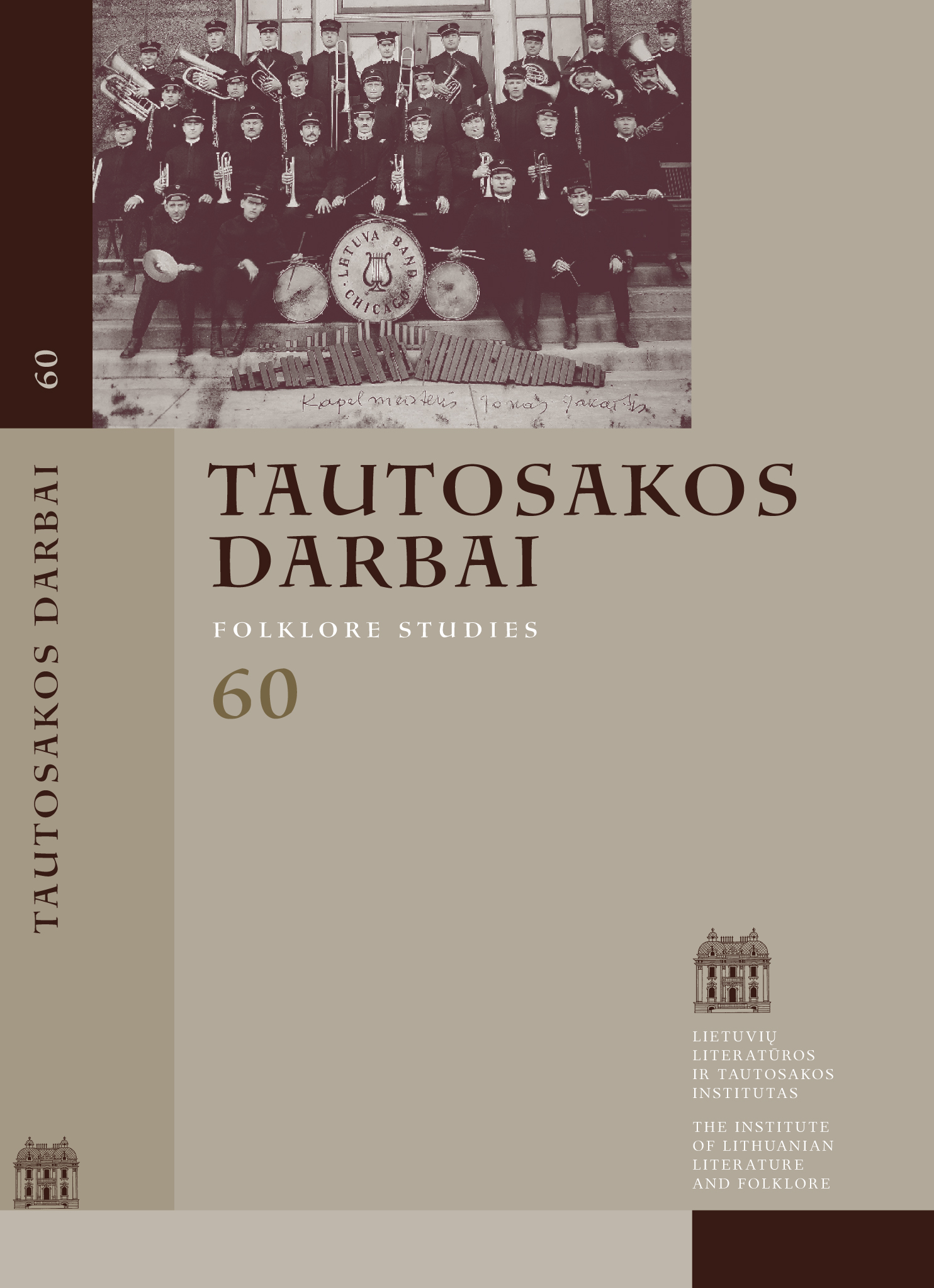Lietuvių emigrantų JAV pučiamųjų instrumentų orkestrai ir tautinis judėjimas
Santrauka
Straipsnio objektas – pimosios bangos lietuvių emigrantų (XIX a. antroji pusė – XX a. pradžia) Jungtinėse Amerikos Valstijose suburti pučiamųjų instrumentų orkestrai ir jų veikla. Pasitelkus istoriografinį metodą, atliktu tyrimu siekiama atskleisti, kaip šios populiariõs to meto Amerikoje instrumentinės muzikinės kultūros fone išgarsėję lietuviškieji orkestrai ne tik kėlė lietuvių emigrantų pasididžiavimą savo kultūra, bet ir žadino bei stiprino jų tautinę savivoką. Svarstoma, kaip nelengva buvo emigrantams lietuviams įvairiais atžvilgiais (kultūriniu, religiniu, ekonominiu) įsitvirtinti naujiesiems atvykėliams iš Rytų ir Pietų Europos nedraugiškoje ir svetimoje multikultūrinėje aplinkoje. Tyrimas atliktas naudojantis prieinamais šaltiniais – periodine ir kita JAV lietuvių spauda bei su tema susijusia moksline literatūra.
Atsisiuntimai
Skaitomiausi šio autoriaus(ų) straipsniai
- Rūta Žarskienė, Inga Vidugirytė, Asta Skujytė-Razmienė, Gražina Kadžytė, Lina Leparskienė, Vita Džekčioriūtė-Medeišienė, Dalia Zaikauskienė, Kronika , Tautosakos darbai: T 58 (2019)
- Vida Norvaišienė, Dainius Razauskas, Rūta Žarskienė, Vita Ivanauskaitė-Šeibutienė, Lina Būgienė, Kronika , Tautosakos darbai: T 49 (2015)
- Radvilė Racėnaitė, Rūta Žarskienė, Živilė Ramoškaitė, Asta Skujytė-Razmienė, Aušra Žičkienė, Kronika , Tautosakos darbai: T 51 (2016)
- Guntis Pakalnas, Rimantas Sliužinskas, Asta Skujytė-Razmienė, Radvilė Racėnaitė, Vita Ivanauskaitė-Šeibutienė, Rūta Žarskienė, Lina Leparskienė, Andželika Jakubynienė, Kronika , Tautosakos darbai: T 47 (2014)
- Radvilė Racėnaitė, Asta Skujytė-Razmienė, Ainė Skudutytė, Povilas Krikščiūnas, Gaila Kirdienė, Austė Nakienė, Rūta Žarskienė, Kronika , Tautosakos darbai: T 50 (2015)
- Austė Nakienė, Daiva Račiūnaitė-Vyčinienė, Rokas Sinkevičius, Aušra Žičkienė, Nijolė Laurinkienė, Rūta Žarskienė, Kronika , Tautosakos darbai: T 53 (2017)
- Rūta Žarskienė, Balsas truba swieta judins, ir numirusius pabudins: malda su pučiamaisiais instrumentais liaudiškojo pamaldumo tradicijoje , Tautosakos darbai: T 55 (2018)
- Rūta Žarskienė, Muzikavimas atlaiduose, arba Barokas XX–XXI amžiuje , Tautosakos darbai: T 49 (2015)
- Rūta Žarskienė, VDU folkloro ansamblio „Linago“ ekspedicijų pėdomis , Tautosakos darbai: T 54 (2017)
- Rūta Žarskienė, Pratarmė , Tautosakos darbai: T 60 (2020)
